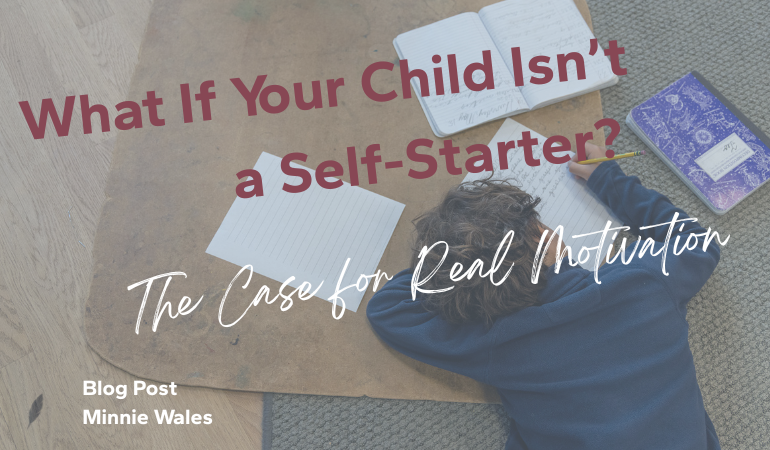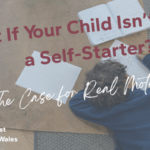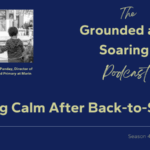Today’s parents are raising children in a world defined by pressure and comparison. From an early age, kids are scheduled, measured, and pushed to keep pace with ambitious expectations. And in this climate, one quiet fear surfaces for many families:
“If my child isn’t already driven, how will they ever learn to be?”
It’s a worry that runs deep, especially for parents who believe in the value of a Montessori education but wonder if it works for every child. I hear a version of this often: “Montessori seems great for kids who are naturally motivated. But my child isn’t. What happens then?”
This isn’t a small question; it strikes at the heart of modern parenting. In a world full of external pressures, we’ve come to equate motivation with being pushed. But the real question isn’t whether your child has motivation. It’s whether they’re in an environment that helps them develop it from within, which is a skill far more durable than compliance.
In my years in education, I have seen over and over how motivation isn’t something children either have or don’t have. It’s something they learn. And Montessori is designed to help children—especially those who aren’t yet self-starters—build that capacity from the inside out.
When “Reluctance” Is Just the Beginning
When I returned to Marin Montessori after several years teaching in Hawai’i, I came back to lead an Upper Elementary class in the Domes. Early that year, I met a fourth-year student—we’ll call him Fred—who was bright but not especially self-driven. He followed up on lessons with good work, and if I had assigned tasks to him, he would have completed every one diligently. In a traditional classroom, Fred would have earned straight As.
But unlike some of his peers, Fred didn’t push himself beyond the expected. While classmates created charts and dioramas, wrote plays, and worked through dozens of math problems, Fred stuck to the work directly in front of him. He wasn’t disengaged; he simply hadn’t yet learned how to identify and choose the right level of challenge for himself.
For students like Fred, this is the real “big work” of the Elementary years: learning to choose their challenges.
How Montessori Guides Support Reluctant Learners
When a child doesn’t seem naturally inclined to push themselves, our job as Guides is not to assign more work or apply pressure. Instead, it’s to help them learn how to choose their edge. And we do that through intentional structures and daily conversations that build this capacity over time.
We start each day by greeting students and setting expectations through what we call the morning handshake. If a child doesn’t know what they want to work on, we guide their choices. If they suggest something fun but of a lower priority, we help them sequence their work. It might sound like:
I hear that you really want to start with the Tone Bars this morning. That does sound good. But I see that you haven’t yet followed up on the Preposition Grammar Box lesson from yesterday. It’s important to practice it while it’s still fresh. So, would you like to do the Grammar Box first, or the Tone Bars for 15 minutes and then the Grammar Box?
Throughout the day, we check in on work. Sometimes we observe silently, giving students space to reconnect on their own. Other times, we step in with a gentle nudge to help them stretch:
I see you’ve drawn two right triangles for your Pythagorean Theorem work and added 15 hearts and rainbows. Are those helping you learn Pythagoras? They’re a good decoration—but before decorating, let’s set a real math goal. Fifteen triangles sounds like a solid challenge.
We also use daily record book checks to help children build reflection skills, executive function, and accountability. If a student has followed through on plans, we celebrate that. If they haven’t, we problem-solve together—not as punishment, but as coaching:
We agreed you’d work on your poetry after the lesson. I don’t see that here. What happened? How can we make sure it happens tomorrow morning?
And at least once a month, we hold individual meetings to reflect more deeply on work habits, interests, and skill growth. This is where students begin to recognize their own strengths and blind spots. As they get older, these conversations help them set their own academic goals.
We like to say that Montessori is a hundred-year-old solution to today’s urgent problems, and that couldn’t be truer when it comes to helping reluctant learners discover their internal motivations. Montessori education is designed and honed to give children real responsibility, meaningful choices, and the space to build the muscle of self-direction.
These are precisely the qualities they’ll need to thrive in a world that won’t always provide the push for them.
Choosing to Work, Again and Again
The other great gift we give students is practice. Every day, they make dozens of choices: what to work on, where to work, who to work with, how to follow up on a lesson, how to decorate a page. Most importantly, they choose to work over and over again. That act of choosing builds a kind of motivation that can’t be assigned or graded.
For a reluctant learner, this kind of daily practice isn’t a gap in rigor. It is the rigor. It’s how they learn to identify their own challenges, stretch themselves, and build the inner drive they’ll need for the rest of their lives.
By Fred’s sixth year in Elementary, he chose to create a set of math pages that incorporated every concept he had learned—complete with control pages and worked solutions. He wasn’t waiting for a push anymore. He had learned to push himself.
Why This Matters
For many parents, the question isn’t just about the present; it’s about the future. Will my child thrive in high school? Will they rise to challenges when no one is assigning them? Will they develop the discipline and confidence they need to succeed?
Our answer is yes, and not because we push them harder, but because we teach them how to push themselves.
If a child seems reluctant, that doesn’t mean Montessori isn’t right for them. It may mean they’re exactly where they need to be: in a community that believes motivation can be built, strengthened, and carried forward into life beyond school.

As the Director of Education for Elementary and career-long Montessori educator, Minnie relishes the gift that a Montessori education offers to children, families, and society.





